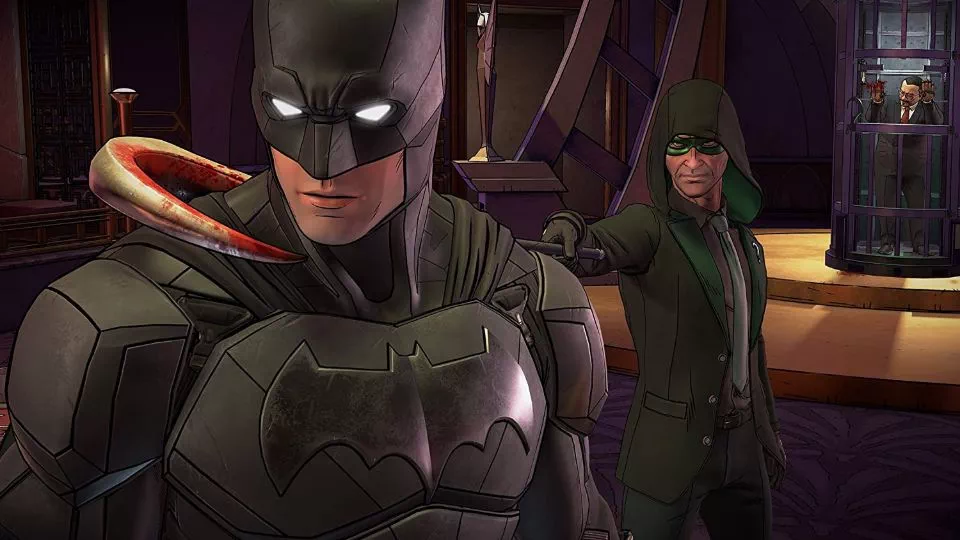Batman Arkham Asylum - Revi...
As we approach the 10th anniversary of Batman...
By Reanna Quitzon2522

1

The story of how Telltale Games went bankrupt hit the headlines in 2019. Now, with its revival, it is time to visit one of its most prolific releases, Batman: The Enemy Within.
This game has truly changed the way Telltale does things; we have spent years complaining about how our choices have no bearing on games that advertise that you are in control of the story.
So, Telltale finally got the drift and presented us with this masterpiece. Although Batman: The Enemy Within does not get as much love as Telltale’s The Walking Dead series, it still deserves a place among Telltale’s best releases up to date. Here is a breakdown of the story, mechanics, graphics, and our final verdict.
Story
If you have not played the first season of Telltale’s Batman series, then you are in for a surprise. Right off the bat, you will realize that it takes the staples of the Batman universe and turns them on their head.
Bruce’s parents are no longer portrayed as the benevolent individuals who have tragically died at the hands of a common mugger. On the contrary, in season one, Bruce discovers that they were actually high-profile criminals who controlled Gotham’s underworld to further their careers and amass a fortune.
Of course, this discovery sets the tone of the second installment, since Bruce is more determined than ever to distance himself from his parents’ criminal legacy and prove that he can do good while juggling his life as Bruce and his secret life as the Caped Crusader.
After defeating the Penguin in the first game, another acquaintance makes an appearance. John Doe, whom we’ve previously met in Arkham Asylum, is obviously set to be the big bad of this season.
Green hair and a manic laugh, does that remind you of a certain DC villain? However, if you are waiting for John to inevitably turn into the Joker you know and love, you will be surprised by the events that transpire. Actually, you get to control the narrative here by influencing John Doe’s decisions and nudging him in the right, or wrong, direction.
Also, you get to interact with old allies like Alfred, Commissioner Gordon, and Lucius Fox. Nonetheless, Telltale keeps everything fresh by introducing new characters, including Amanda Waller, Riddler, Harley Quinn, Bane, and Tiffany Fox, Lucius’s daughter.
As in any Telltale game, your decisions impact how these characters perceive you and how the story progresses. Interestingly, the game does not make the characters reflect their comic book personalities.
For example, Harley Quinn is not Joker’s sidekick, because John Doe has not transformed into the Joker yet. Instead, she is an assertive character that is in control of John Doe. You also get to know a bit more about the criminal gang that is called The Pact, Telltale’s version of the Suicide Squad.
The storytelling aspect of Batman: The Enemy Within really shines in episode 5, where you can see the culmination of all your choices throughout the previous episodes and, for once, your choices do matter.
 https://revyou.com/uploads/thumbnail-960/159349427049481GsByiUbAL._AC_SL1500_.webp
Batman The Enemy Within - PS4 - Game Reviews
https://revyou.com/uploads/thumbnail-960/159349427049481GsByiUbAL._AC_SL1500_.webp
Batman The Enemy Within - PS4 - Game Reviews https://revyou.com/uploads/thumbnail-960/159349427049581J5QnfIBSL._AC_SL1500_.webp
Batman The Enemy Within - PS4 - Game Reviews
https://revyou.com/uploads/thumbnail-960/159349427049581J5QnfIBSL._AC_SL1500_.webp
Batman The Enemy Within - PS4 - Game Reviews https://revyou.com/uploads/thumbnail-960/159349427049781nChy65JvL._AC_SL1500_.webp
Batman The Enemy Within - PS4 - Game Reviews
https://revyou.com/uploads/thumbnail-960/159349427049781nChy65JvL._AC_SL1500_.webp
Batman The Enemy Within - PS4 - Game Reviews
Graphics
Telltale does not really change its formula when it comes to graphics; after all, if it is not broken, why fix it? The graphics are obviously influenced by comic books, which makes the character models look cartoonish, as opposed to the more realistic models we usually see nowadays.
Yet, this is not necessarily a bad thing, as the graphics blend with the story well. Also, the color palette of this season is vividly more colorful than the one used in the previous season, with bright hues of green and magenta, especially in the final episode.
Generally, the game plays smoothly with no significant drops in the frame rate on pc, but it can be a bit laggy on android devices. Overall, the game looks as visually pleasing as you would expect from a Telltale game.
Mechanics
Batman: The Enemy Within pulls no punches regarding mechanics and gameplay. It is obvious that Telltale has been trying hard to change its formula and listen to the fans’ complaints about previous releases.
As you would expect, quick-time events are still a thing, and you can get a “game over” screen if you do not click the required button on time. However, the mechanics are not punishing when it comes to QTE because you can restart from where you left off, so the stakes are pretty low.
This is not a good thing if you are a hardcore gamer because there is no real challenge involved, but Batman: The Enemy Within is not Dark Souls, meaning that it focuses more on the plot than on the action sequences.
Nonetheless, there is an obvious improvement in the way such scenes are staged, as they do not feel scripted to a tee anymore. You have some freedom on how you tackle your opponents.
You get more choices—do you want to punch your enemy in the face or use your batarang? You also get to plan how you go about confronting enemies by using your bat vision. So, if you like stealth elements in your games, you will like this one.
The focus is still on your dialogue choices and how you shape Bruce’s life and relationships. On more than one occasion, the game asks you whether you want to tackle the situation as Bruce or Batman, which adds a nice touch to the overall gameplay.
Moreover, you try to balance your relationships with certain characters. For example, if you side too much with Amanda Waller, you can irreversibly damage your relationship with Commissioner Gordon.
The game alerts you whenever you make a big decision by displaying “your relationship with X has changed.” Although Telltale is notoriously known for giving players the illusion of choice, the choices in this game really have an impact.
The biggest example of this is episode 5; for the first time ever, Telltale gives its players two different episodes based on their choices in the previous four episodes. The choice is ultimately yours: do you want John to become a villain or a vigilante? Do you want to trust Gordon or Amanda Waller? Most importantly, do you want to be Bruce or Batman?
Batman: The Enemy Within revolutionizes the way Telltale does things. With two significantly different final episodes, you get to feel in control more than ever. So, if you are generally skeptical about Telltale releases, check this one because it is uniquely different from other episodic games.
Updated 4 years ago